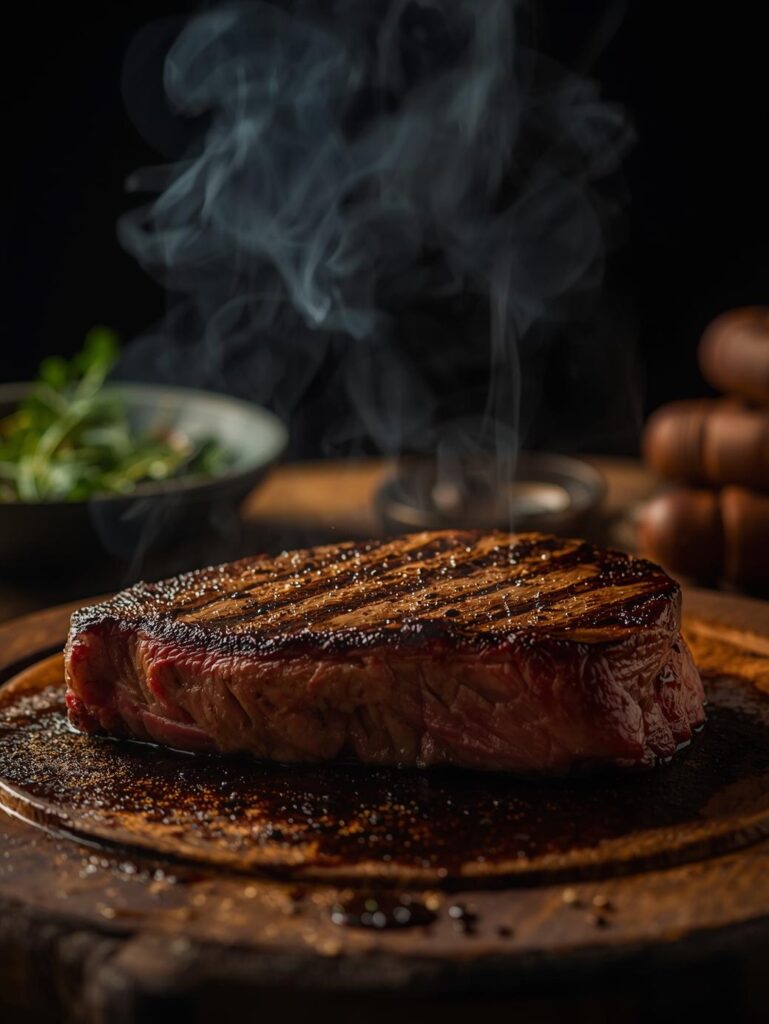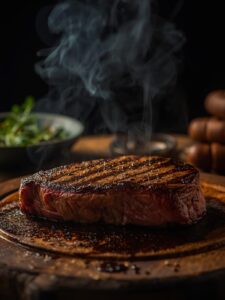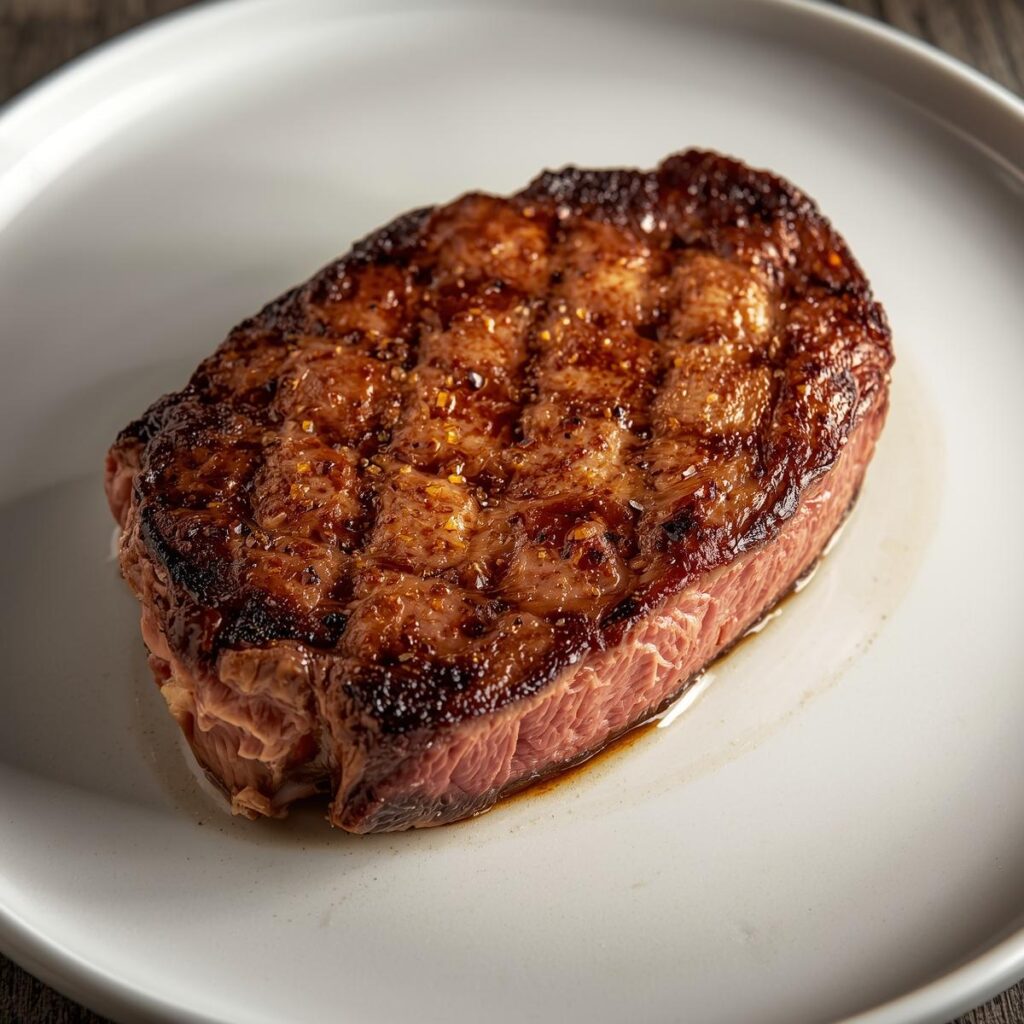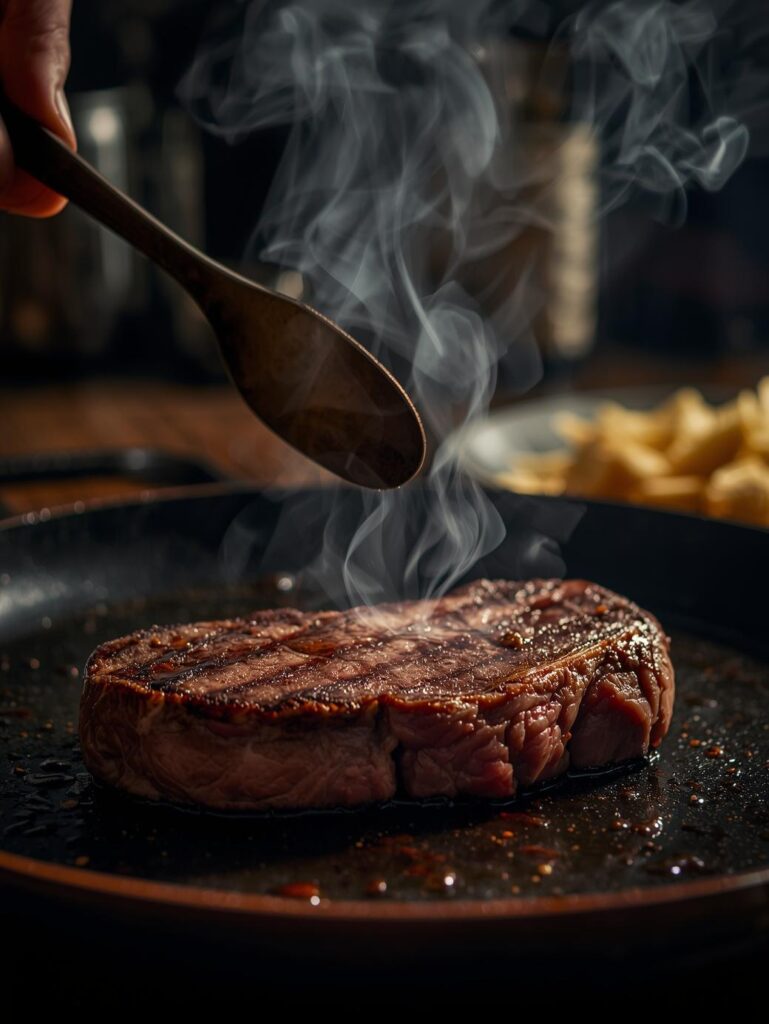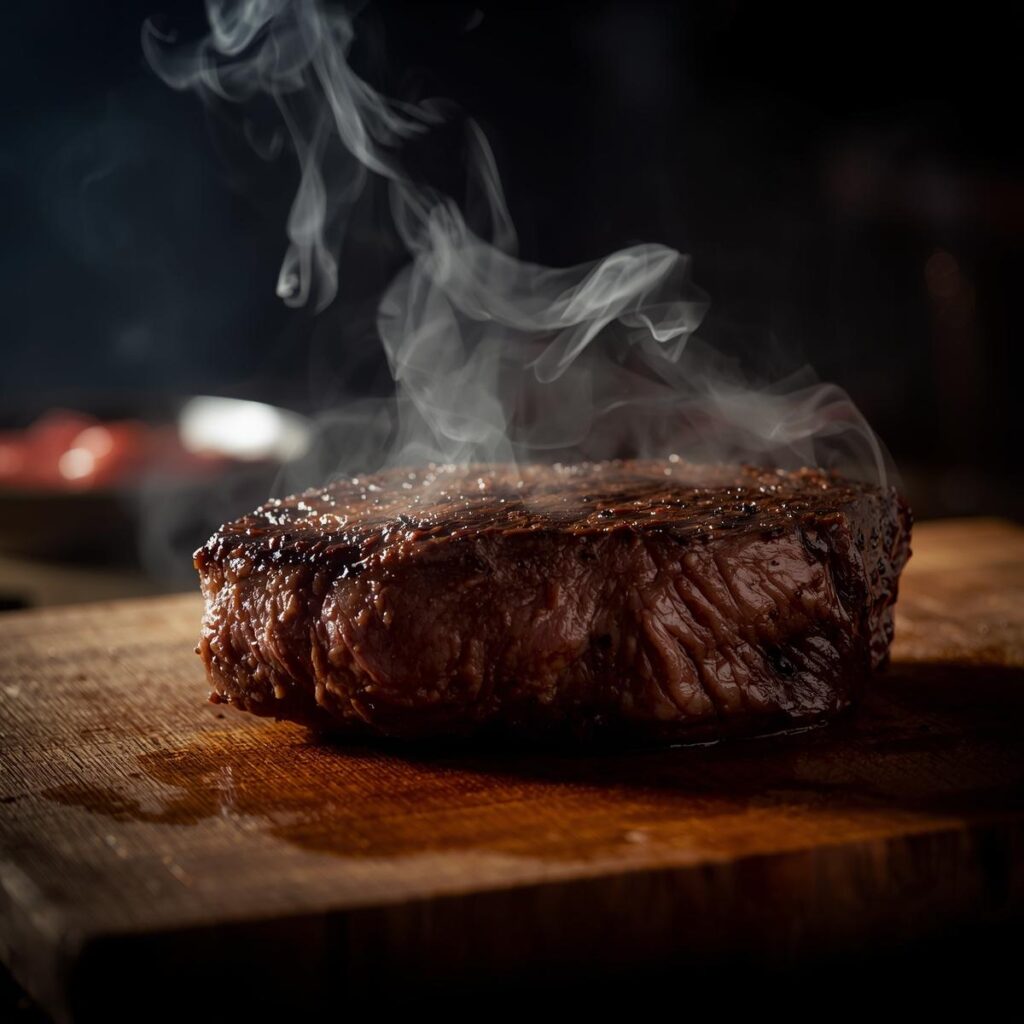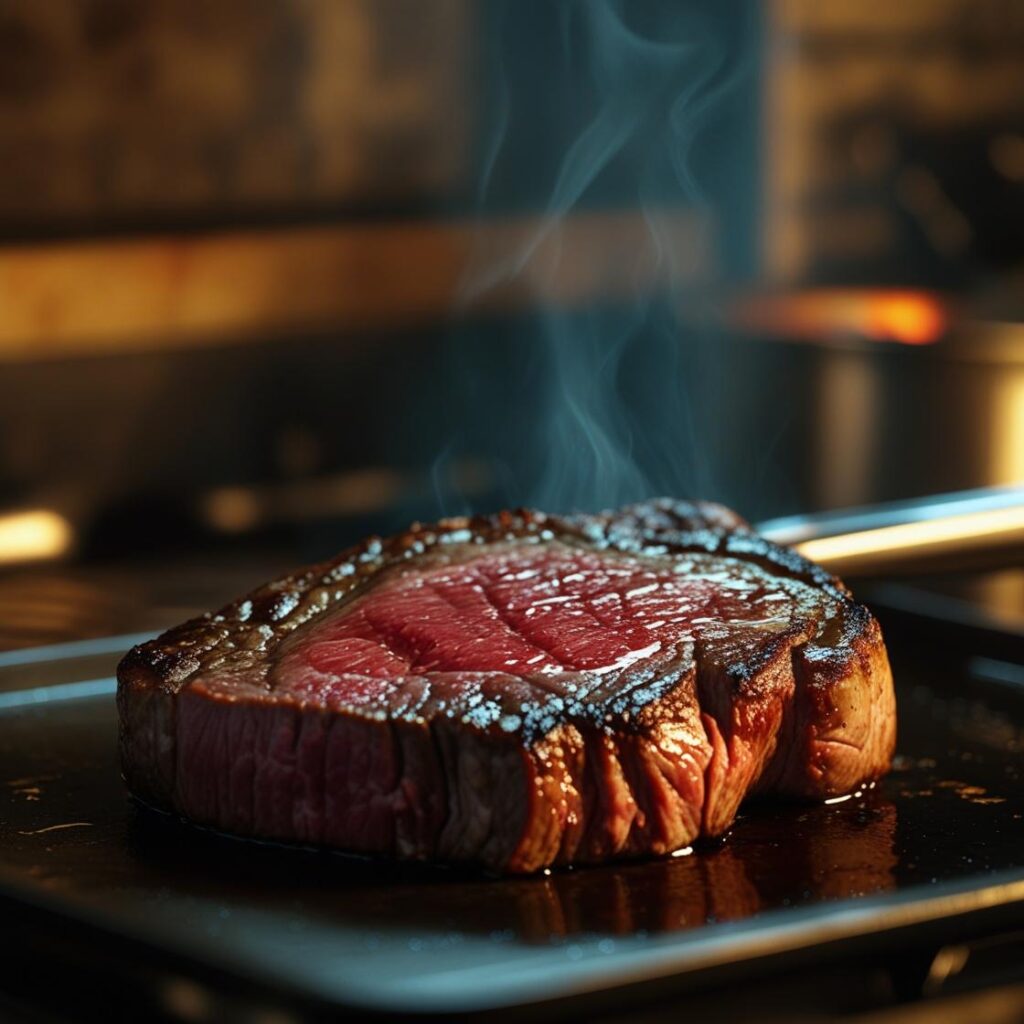Expert’s Note: This revolutionary technique from our BBQ Methods Encyclopedia represents the pinnacle of precision cooking. Reverse searing isn’t just another method—it’s a fundamental shift in thermal management that guarantees perfect edge-to-edge doneness with an incredible crust. Master this, and you’ll never gamble with steak doneness again.
REVERSE SEARING 2026: THE DEFINITIVE GUIDE
“Reverse searing is like conducting a thermal symphony—you gently warm the orchestra to perfect harmony before unleashing the explosive crescendo of the sear. Traditional methods gamble with a gradient of doneness, but reverse searing gives you mathematical precision from edge to edge. It’s not just cooking; it’s thermal engineering that turns good steak into legendary steak.”
Reverse Searing 2026: The Definitive Guide to Perfect Steak Every Time
Download our free Reverse Searing Temperature & Timing Calculator for perfect results with any cut.
The reverse sear method has evolved from professional kitchen secret to essential home technique, and 2026 brings new refinements that make it more accessible than ever. While most grillers still sear first and hope for the best, reverse searing flips the script—gently bringing steak to perfect internal temperature before delivering the knockout sear. This guide covers everything from the fundamental physics to advanced 2026 techniques that will transform your steak game permanently.
🔬 THE SCIENCE BEHIND REVERSE SEARING: WHY IT WORKS BETTER
Understanding the thermal dynamics reveals why reverse searing produces superior results every time.
⚙️ Thermal Physics of Meat Cooking
The Three Thermal Transformations
- Protein Denaturation: Gradual unfolding of muscle proteins preserves moisture and texture
- Collagen Conversion: Slow heating allows connective tissue to transform into gelatin
- Maillard Reaction: Final high-heat sear creates complex flavor compounds rapidly
- Moisture Management: Surface drying during low-heat phase enables better searing
For deeper science, see our Meat Science Guide.
🎯 Traditional vs. Reverse Searing: The Showdown
❌ Traditional Searing Problems
- Large gray band of overcooked meat
- Uneven doneness from edge to center
- Timing guesswork and temperature spikes
- Frequent flipping and babysitting
- Inconsistent results across different cuts
✅ Reverse Searing Advantages
- Perfect edge-to-edge doneness
- 30% more crust development
- Precise temperature control
- Flexible timing and less stress
- Consistent results every time
🛠️ EQUIPMENT EVOLUTION: 2026 TOOLS FOR PERFECTION
The right tools have become more accessible and sophisticated, making reverse searing foolproof.
🌡️ Temperature Monitoring Revolution
2026 Thermometer Standards
- Multi-probe Wireless: Monitor multiple steaks simultaneously with phone alerts
- Ambient Air Sensors: Track oven/grill temperature alongside meat temperature
- Predictive Algorithms: Calculate remaining cook time based on temperature curve
- Surface Temp Lasers: Verify pan/grill temperature before searing
See our 2026 Thermometer Guide for specific recommendations.
🔥 Heat Source Options Ranked
Low-Heat Phase Options
- Oven (Most Consistent): Precise temperature control, even heating
- Pellet Grill (Smoke Option): Adds light smoke flavor during slow phase
- Charcoal (Traditional): Indirect heat with two-zone setup
- Sous Vide (Ultra-Precise): Perfect temperature control, no drying
High-Heat Searing Options
- Cast Iron (Gold Standard): Superior heat retention, even searing
- Charcoal Chimney (Nuclear Option): Extreme heat for 45-second crust
- Gas Grill (Convenient): High BTU burners, quick heat recovery
- Infrared (Restaurant Grade): Intense radiant heat, minimal time
Pro Tip: The 2026 Dry Brine Integration. Combine reverse searing with dry brining for ultimate results. Apply kosher salt 24 hours before cooking and refrigerate uncovered. This seasons deeply and creates a perfectly dry surface for maximum Maillard reaction during the sear.
🎯 THE PERFECT REVERSE SEAR PROTOCOL: STEP-BY-STEP
Follow this precise methodology for foolproof reverse searing with any steak cut.
📝 Preparation Phase (24-2 Hours Before)
Pre-Cook Optimization
- Steak Selection: Choose 1.5-2 inch thick cuts with good marbling
- Dry Brine: Salt generously, refrigerate uncovered 2-24 hours
- Temperature Equalization: Remove from fridge 60-90 minutes before cooking
- Surface Drying: Pat thoroughly dry with paper towels
- Seasoning: Apply pepper and other seasonings (except salt) just before cooking
🌡️ Low-Heat Phase: The Precision Cook
🎯 Reverse Sear Temperature Guide
| Doneness Level | Remove Temperature | Final Temperature | Low-Heat Temp |
|---|---|---|---|
| Rare | 105-110°F | 120-125°F | 225-250°F |
| Medium Rare | 115-120°F | 130-135°F | 225-250°F |
| Medium | 125-130°F | 140-145°F | 225-250°F |
| Medium Well | 135-140°F | 150-155°F | 225-250°F |
| Carryover Cooking | Expect 10-15°F temperature rise during rest before searing | ||
🔥 High-Heat Phase: The Perfect Sear
Searing Protocol
- Rest Phase: Let steak rest 10 minutes while heating searing surface
- Surface Temperature: Heat cast iron/grill to 450-500°F verified by infrared thermometer
- Fat Selection: Use high-smoke point oil (avocado, grapeseed) or beef tallow
- Sear Time: 60-90 seconds per side until deep brown crust forms
- Butter Basting: Optional: add butter, garlic, herbs for final 30 seconds
- Edge Searing: Briefly sear fat cap and edges with tongs
🚀 ADVANCED 2026 TECHNIQUES: BEYOND THE BASICS
These cutting-edge methods take reverse searing to professional levels.
🔄 Hybrid Smoke-Reverse Sear Method
Smoke-Infused Reverse Searing
- Equipment: Pellet grill or charcoal with smoking wood
- Wood Selection: Oak for beef, cherry for pork, pecan for poultry
- Smoke Phase: First 30-45 minutes at 180°F for maximum smoke absorption
- Temperature Phase: Increase to 225-250°F to continue cooking
- Result: Perfect doneness with subtle smoke flavor throughout
Learn more in our Hybrid Cooking Guide.
⏱️ The Express Reverse Sear
Traditional Timeline
- Total Time: 60-90 minutes
- Low Heat: 45-75 minutes at 225°F
- Rest: 10 minutes before searing
- Sear: 2-3 minutes total
- Final Rest: 5-10 minutes
Express Timeline
- Total Time: 25-35 minutes
- Low Heat: 20-30 minutes at 275°F
- Rest: 5 minutes before searing
- Sear: 60-90 seconds total
- Final Rest: 3-5 minutes
🎯 CUT-SPECIFIC REVERSE SEARING STRATEGIES
Different cuts require tailored approaches for optimal results.
🎯 Reverse Searing by Cut Type
| Cut | Thickness | Low-Heat Time | Special Considerations |
|---|---|---|---|
| Ribeye | 1.5-2 inches | 45-60 minutes | Render fat cap during sear |
| Filet Mignon | 2-2.5 inches | 35-50 minutes | Butter baste for added richness |
| New York Strip | 1.5 inches | 40-55 minutes | Excellent crust development |
| Porterhouse | 2+ inches | 60-75 minutes | Monitor filet and strip sides separately |
| Picanha | 2-2.5 inches | 50-65 minutes | Score fat cap, sear fat side first |
| Tomahawk | 2.5+ inches | 75-90 minutes | Sear bone side for presentation |
🚨 TROUBLESHOOTING COMMON REVERSE SEAR ISSUES
🎯 Reverse Searing Problem Solver
| Problem | Cause | 2026 Solution |
|---|---|---|
| Overcooked during sear | Removed too late from low heat | Remove 10-15°F below target, account for carryover |
| Weak crust formation | Wet surface, insufficient heat | Dry brine, pat dry, verify 500°F+ sear surface |
| Uneven doneness | Irregular cut, hot spots | Rotate during low heat, use oven instead of grill |
| Burnt seasoning | High-heat sensitive spices | Add delicate seasonings after searing |
| Greasy mouthfeel | Unrendered intramuscular fat | Longer low-heat phase for fat rendering |
🏆 THE 2026 REVERSE SEAR WORKFLOW: COMPLETE MEAL INTEGRATION
Modern reverse searing fits seamlessly into sophisticated meal planning.
Dinner Party Reverse Searing Timeline
- 24 Hours Before: Dry brine steaks, refrigerate uncovered
- 2 Hours Before: Remove steaks from fridge, let come to room temperature
- 90 Minutes Before Serving: Start low-heat phase at 225°F
- 45 Minutes Before: Prepare sides, set table, make sauces
- 20 Minutes Before: Remove steaks at target temperature, start heating sear surface
- 10 Minutes Before: Rest steaks while finishing sides
- 5 Minutes Before Serving: Execute 60-90 second sear per side
- Serving Moment: Slice, serve immediately with rested juices
🏁 MASTERING THE FUTURE OF STEAK COOKING
Reverse searing in 2026 represents the culmination of thermal science meeting culinary art. What began as a professional kitchen technique has evolved into an accessible, foolproof method that guarantees perfection regardless of cooking experience. The method has stood the test of time because it works with the fundamental physics of meat, rather than against it.
The true beauty of modern reverse searing lies in its flexibility. Whether you’re using a $30 oven thermometer or a $3,000 smart grill, the principles remain the same. The low-heat phase forgives timing mistakes, while the high-heat sear delivers the dramatic finish that makes steak memorable. It’s a method that respects both the science of cooking and the art of eating.
As we look toward the future of steak cookery, reverse searing represents not just a technique, but a philosophy: precision creates perfection, patience creates flavor, and understanding creates mastery. Your journey to reverse sear mastery begins not with complex equipment, but with a simple decision to cook smarter, not harder.
Your mission: Start with a single thick-cut steak and follow the protocol exactly. Measure, time, and document your results. Then repeat, adjusting one variable at a time. Within three attempts, you’ll develop the intuition that transforms this from a recipe into your default cooking method. When you can visualize the thermal journey from refrigerator to plate, you’ve joined the ranks of modern steak masters.
Continue Your Reverse Searing Education: Master every aspect of this revolutionary technique with our complete resource collection:

